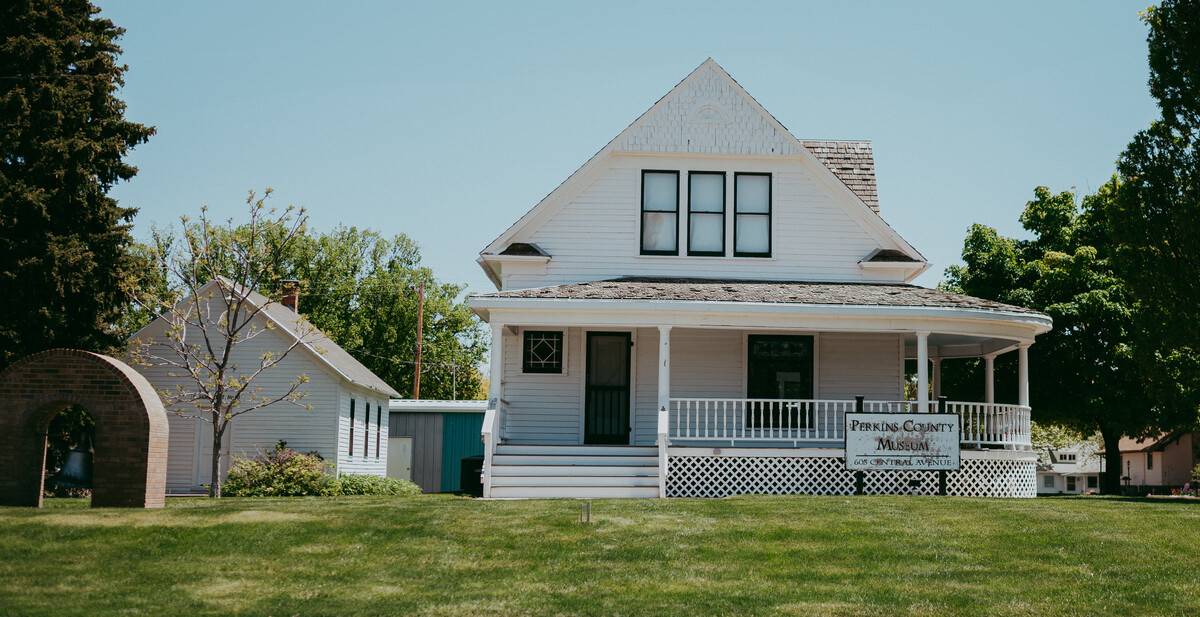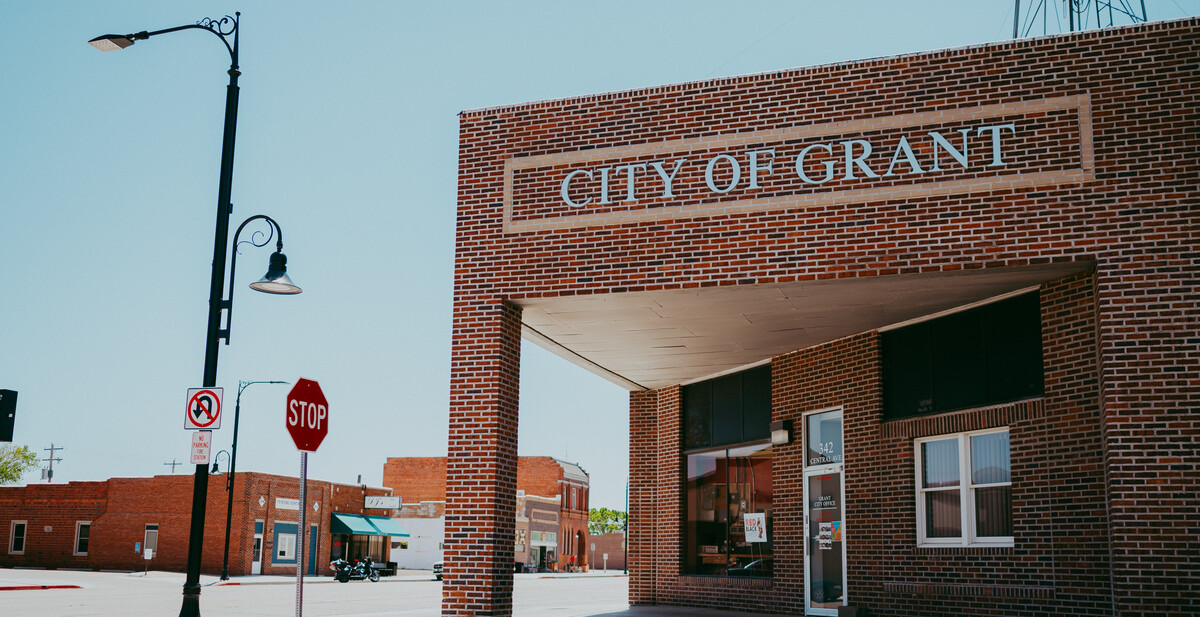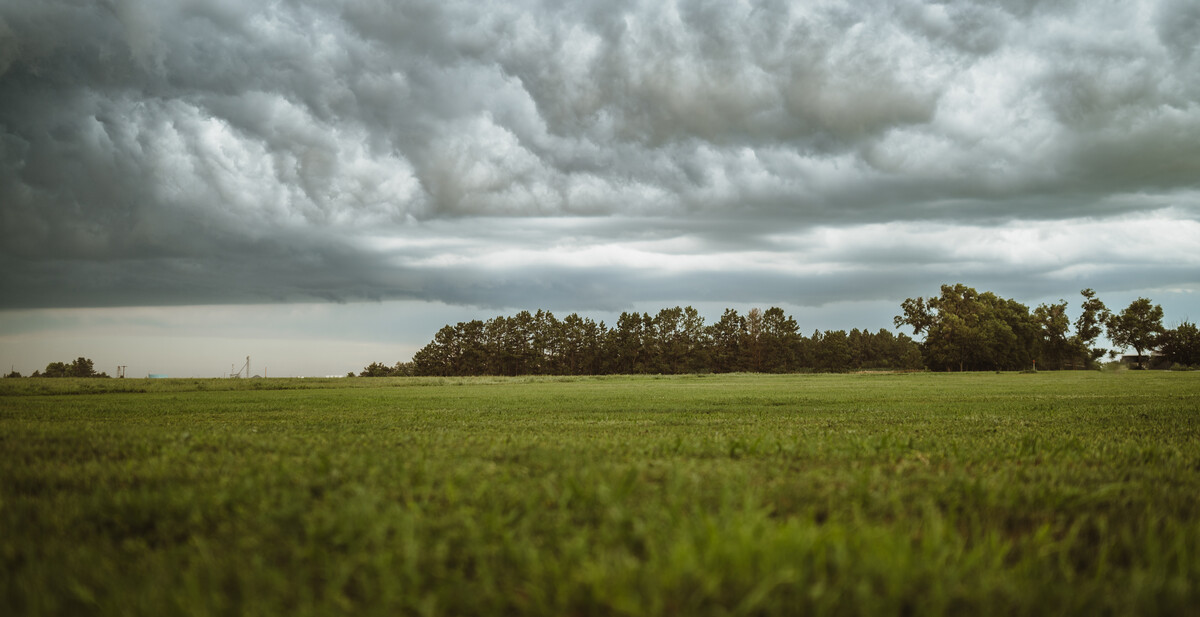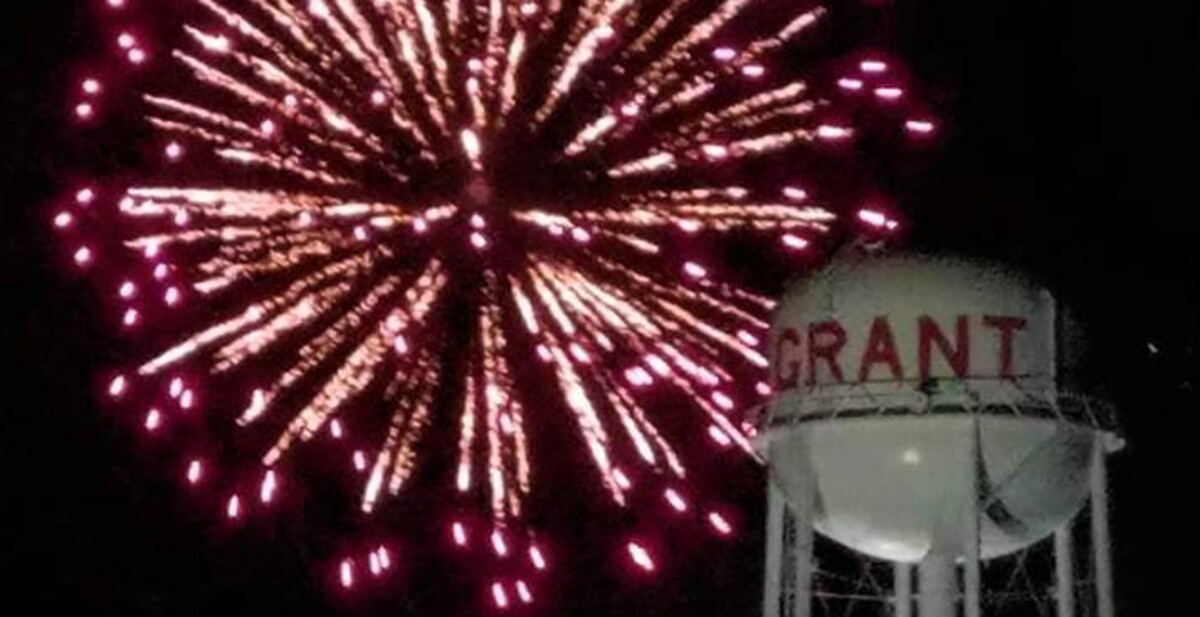Article 4 - Nuisances
Article 4 – Nuisances
Section 3-401: AUTHORITY; public nuisances prohibited
SECTION 3-402: GENERALLY DEFINED
SECTION 3-403: SPECIFICALLY DEFINED
SECTION 3-404: NUISANCE OFFICER
SECTION 3-405: IDENTIFYING NUISANCES
SECTION 3-406: Confirming, Documenting and Presenting Nuisances
SECTION 3-407: Enforcement Procedure
SECTION 3-408: Administrative Procedure
SECTION 3-409: Penal Court Enforcement Procedure
SECTION 3-410: CIVIL COURT PROCEDURE
SECTION 3-411: SPECIAL PROCEDURES; UNSAFE BUILDING OR TREE abatement
SECTION 3-412: SPECIAL PROCEDURE; NUISANCE VEHICLE ABATEMENT
SECTION 3-413: SPECIAL PROCEDURES; WEEDS OR NOXIOUS GROWTH ABATEMENT
SECTION 3-414: COSTS AND FEES
Section 3-401: AUTHORITY; public nuisances prohibited
The City of Grant by this article defines its authority to define, regulate, suppress and prevent nuisances, to declare what shall be a nuisance for its jurisdiction, and to provide services to abate same for the health and sanitation of the city. It shall be the duty of every owner, occupant, lessee, or mortgagee of real estate in the city to keep such real estate free of public nuisances. (Neb. Rev. Stat. §§17-207, 18-1720)
SECTION 3-402: GENERALLY DEFINED
A nuisance consists in doing any unlawful act, or omitting to perform a duty, or suffering or permitting any condition or thing to be or exist, which act, omission, condition or thing either:
A. Injures or endangers the comfort, repose, health or safety of others,
B. Offends decency,
C. Is offensive to the senses,
D. Unlawfully interferes with, obstructs, tends to obstruct or renders dangerous for passage any stream, public park, parkway, square, street or highway in the city,
E. In any way renders other persons insecure in life or the use of property,
F. Essentially interferes with the comfortable enjoyment of life and property, or
G. Tends to depreciate the value of the property of others. (Neb. Rev. Stat. §18-1720)
SECTION 3-403: SPECIFICALLY DEFINED
The maintaining, using, placing, depositing, leaving or permitting of any of the following specific acts, omissions, places, conditions and things, unless specifically authorized by resolution or ordinance of the city, are hereby declared to be nuisances:
A. Any odorous, putrid, unsound, or unwholesome grain, meat, hides, skins, feathers, vegetable matter or the whole or any part of any dead animal, fish or fowl.
B. Privies, vaults, cesspools, dumps, pits or like places which are not securely protected from flies or rats or other insects and rodents or which are foul or malodorous.
C. Filthy, littered or trash-covered cellars, house yards, barnyards, stable-yards, factory-yards, mill yards, vacant areas in rear of stores, granaries, vacant lots, houses, buildings or premises or any condition which allows the perpetuating of insects and rodents.
D. Animal manure in any quantity which is not securely protected from flies and the elements or which is kept or handled in violation of any ordinance of the city.
E. Dead animals not buried or dead animals buried within the corporate limits.
F. Liquid household waste, human excreta, garbage, butcher's trimmings and offal, parts of fish or any waste vegetable or animal matter in any quantity; provided, nothing herein contained shall prevent the temporary retention of waste in receptacles nor the dumping of non-putrefying waste in a place and manner approved by the city.
G. Tin cans, bottles, glass, cans, ashes, small pieces of scrap iron, wire metal articles, bric-a-brac, broken stone or cement, broken crockery, broken glass, broken plaster and all trash or abandoned material, unless the same is kept in covered bins or galvanized iron receptacles.
H. Rags, accumulations of barrels, boxes, crates, packing crates, mattresses, bedding, excelsior, packing hay, straw or other packing material; lumber not neatly piled; appliances, scrap iron, tin, or other metal not neatly piled; old automobiles or parts thereof, or any other waste materials when any of said articles or materials create a condition in which flies or rats may breed or multiply, which may be a fire danger or which are so unsightly as to depreciate property values in the vicinity thereof.
I. Litter, which includes but is not limited to: (1) trash, rubbish, refuse, garbage, paper, rags, and ashes; (2) wood, plaster, cement, brick, or stone building rubble; (3) grass, leaves, and worthless vegetation; (4) offal and dead animals; and (5) any machine, vehicle, or parts of a machine or vehicle which have lost their identity, character, utility, or serviceability as such through deterioration, dismantling, or the ravages of time, are inoperative or unable to perform their intended functions, or are cast off, discarded, or thrown away or left as waste, wreckage, or junk.
J. Hauling any garbage, waste, or refuse matter through the streets, alleys, and public ways, except when the same is loaded and conveyed in such a way that none of the contents shall be spilled.
K. Any unsafe or unsightly building, billboard, or other structure or any old, abandoned or partially destroyed building or structure or any building or structure commenced and left unfinished, which buildings, billboards, or other structures are a fire hazard, a menace to the public health or safety, or are so unsightly as to depreciate the value of property in the vicinity;
L. All places used or maintained (1) as junkyards or dumping grounds; (2) for the wrecking and dissembling of automobiles, trucks, tractors, or machinery of any kind; (3) for the storing or leaving of worn-out, wrecked, or abandoned automobiles, trucks, tractors, or machinery of any kind or of any of the parts thereof; or (4) for the storing or leaving of any machinery or equipment used by contractors or builders or by other persons, which places are kept or maintained so as to essentially interfere with the comfortable enjoyment of life or property by others or which are so unsightly as to tend to depreciate property values in the vicinity thereof.
M. Undrained lots which hold or may hold stagnant water or any other nuisance.
N. Storage, accumulation, keeping, placing, or allowing to remain trash, garbage, scrap and wrecked, worn-out broken or inoperative or partially destroyed or disassembled personal or real property of any kind, including any junk or abandoned motor vehicles, tractors, trailers, machinery, and equipment;
O. Any motor vehicle which is not properly registered or is inoperable, wrecked, junked, or partially dismantled and remaining longer than 30 days on private property. This does not apply to a vehicle in an enclosed building, a vehicle on the premises of a business enterprise operated in a lawful place and manner when necessary to the lawful operation of such business enterprise (such as a licensed salvage dealer, motor vehicle dealer or farm implement dealer), or a vehicle in an appropriate storage place or depository maintained in a lawful place and manner, and so long as the premises on which said vehicle is located is not a nuisance and is maintained in a healthful and safe condition;
P. Any wood or tree limbs not cut and stacked in neat rows on an area not exceeding 10 feet by 16 feet.
Q. Debris from burned or damaged buildings, whether created by consensual burning or demolition or whether occurring due to fire or age.
R. Stockyards, granaries, mills, pig pens, cattle pens, chicken pens, or any other place, building, or enclosure in which animals or fowl of any kind are confined or on which are stored tankage or any other animal or vegetable matter or on which any animal or vegetable matter, including grain, is being processed, when said places in which said animals are confined or said premises on which said vegetable or animal matter is located are maintained and kept in such a manner that foul and noxious odors are permitted to emanate therefrom to the annoyance of inhabitants of the city or are maintained and kept in such a manner as to be injurious to the public health.
S. The emission of smoke, dust, fumes, gases, mists, odors, or polluted air from any source that is injurious or dangerous to human health and safety.
T. Dead or diseased trees within the right of way of streets within the corporate limits of the city or on private property within the one-mile zoning jurisdiction beyond the corporate limits.
U. Maintenance of weeds or grasses 12 inches or more in height. Weeds shall include, but not be limited to, bindweed (Convolvulus arvensis), puncture vine (Tribulus terrestris), leafy spurge (Euphorbia esula), Canada thistle (Cirsium arvense), perennial peppergrass (Lepidium draba), Russian knapweed (Centaurea picris), Johnson grass (Sorghum halepense), nodding or musk thistle, quack grass (Agropyron repens), perennial sow thistle (Sonchus arvensis), horse nettle (Solanum carolinense), bull thistle (Cirsium lanceolatum), buckthorn (Rhamnus sp.), hemp plant (Cannabis sativa), ragweed (Ambrosiaceae) or any noxious weed that is designated and listed as noxious in rules and regulations adopted and promulgated by the Nebraska Director of Agriculture. “Noxious growths” shall mean any weeds, grasses or other rank growth or worthless vegetation which exceeds 12 inches in height, or 8 inches in height on any lot or piece of ground located within the corporate limits of the city which has previously been declared a nuisance for noxious growths.
V. All other things specifically designated as nuisances elsewhere in this code. (Neb. Rev. Stat. §§2-953, 17-563, 18-1720)
SECTION 3-404: NUISANCE OFFICER
The city shall appoint an individual or organization to identify and enforce abatement of nuisances within the city. Said individual or organization shall be identified as the "nuisance officer" and said appointment shall be identified by resolution of the city.
SECTION 3-405: IDENTIFYING NUISANCES
A. The city may identify suspected nuisances, in which case the city clerk shall, upon direction of the City Council, notify the nuisance officer of the suspected location, person or persons in violation of any provision of this chapter and provide the address of such alleged nuisance.
B. The city may request that the nuisance officer audit the city for nuisances in the city as defined by the municipal code. The nuisance officer shall then view the property or area for any violations of the nuisances of the city. The nuisance officer shall not go upon private property for said audit unless granted permission by the resident/owner of suspected property.
SECTION 3-406: Confirming, Documenting and Presenting Nuisances
The nuisance officer shall identify and confirm that in his or her opinion a nuisance exists as defined by federal, state or city law.
A. Upon confirming that a nuisance appears to exist, the nuisance officer shall document said nuisance with photographs and other evidence pertinent to the situation. He or she will also obtain the legal description of the property and identify the current owners and, if possible, the occupants of the property upon which the nuisance exists.
B. The nuisance officer shall then present this information to the City Council at a regular or special meeting for its confirmation that a nuisance exists.
SECTION 3-407: Enforcement Procedure
The nuisance, health and/or sanitation violation is brought to the City Council by the city nuisance officer, the Board of Health or upon the council's own action. The council then may declare by resolution a nuisance, health and/or sanitation violation. The nuisance, health, and/or sanitation ordinances may be enforced by (A) city administrative procedures; (B) penal prosecutions through the courts; and/or (C) by civil procedures in the courts. Any of these procedures or any combination of these procedures may be used to enforce the nuisance, health and/or sanitation ordinances of the city.
SECTION 3-408: Administrative Procedure
The city may proceed with abatement of the nuisance, sanitation, and/or health violation with or without court involvement after the following procedure is followed:
A. After a nuisance is declared, the city clerk notifies the nuisance officer to serve notice upon the violator(s).
B. The nuisance officer shall prepare and serve notice which shall describe the found nuisance and state when the required date of abatement and removal of the nuisance shall be accomplished. The notice shall also provide information as to how the interested parties may request a hearing before the City Council, described in paragraph (D) herein.
C. The notice shall be given to each owner or owner's duly authorized agent and to the occupant, if any, by personal service or certified mail. If notice by personal service or certified mail is unsuccessful, said notice shall be given by a single publication in a newspaper of general circulation in the city and by conspicuously pasting the notice on the lot or ground upon which the nuisance is to be abated and removed. The date of service is determined by the later of certified mail receipt, personal service or publication date.
D. The accused violator (owner/agent/occupant) may request in writing a hearing before the City Council within five days after notice of violation is served or published. For tree nuisance violations, the period for requesting a hearing is extended to 30 days after service.
E. If no request for a hearing is received in the required time period, the City Council may cause a hearing to be held. This option is at the sole discretion of the council, to be used in exceptional cases.
F. If a hearing is requested, the city clerk shall fix the date of said hearing to be no later than 15 days from receipt of the request for the hearing. Notice of said hearing, with the date and time, shall be served upon the agent, owner, and occupant of the nuisance property by certified and regular mail.
G. The hearing shall be a "show cause" hearing in which the agent, owner, and/or occupant of the nuisance property (“objecting party”) shall provide evidence why the alleged condition should not be found to be a public nuisance and remedied. This hearing shall be heard before a quorum of the City Council. The presiding official of the council may conduct the hearing or said presiding official may appoint another person as the hearing officer to conduct the hearing. Said hearing officer may be the city attorney or the enforcement officer. At the hearing, the hearing officer shall mark and receive evidence which was presented when the finding of a nuisance was made, relevant evidence of the nuisance since that time, and evidence that the notices were properly given. The objecting party shall then provide his/her/its evidence. The rules of evidence are not required at said hearing but all evidence must be relevant to the particular nuisance being heard. Testimony shall be under oath as administered by the hearing officer or any person so designated by the hearing officer, and the person providing the testimony is subject to the laws of perjury. Evidence may be submitted in writing by affidavit.
H. No later than 14 days after the hearing and consideration of the evidence, the City Council may by majority vote rescind the resolution of violation. If the resolution of violation is not rescinded, it shall stand. Furthermore, if the objecting party or designated agent fails to appear at the hearing or does not provide evidence, the nuisance shall stand. If the resolution is not rescinded, the council may by resolution extend the date that the owner, occupant, lessee, or mortgagee shall abate and remedy the said public nuisance; but in no case shall the time exceed 60 days. The findings of the City Council shall be made no later than 14 days after the hearing and notice of its finding shall be served upon the objecting party by regular U.S. Mail within five days of the finding. Such finding of the hearing is final, provided that an interested party or parties may appeal the decision to the appropriate court for adjudication
I. If the nuisance officer determines the nuisance is not remedied and abated within the time period designated, the city shall cause the abatement of the nuisance.
J. If an interested party properly appeals to an appropriate court the findings and orders of the city, the city’s actions shall be stayed during until such time that the legal proceedings are completed or dismissed. In cases of appeal from an action of the city condemning real property as a nuisance or as dangerous under the police powers of the city, the owners of the adjoining property may intervene in the action at any time before trial. (Neb. Rev. Stat. §19-710)
SECTION 3-409: Penal Court Enforcement Procedure
If the declared nuisance, health, and/or sanitation is not abated within 15 days that the notice is served upon the owner and/or occupant and the city clerk has not received a request for hearing, the nuisance officer may cause issue of a citation for the code violation.
A. The citation shall be prosecuted to the appropriate court by the city attorney or other designated prosecutor for the city.
B. A person or persons found guilty of these violations shall be guilty of a misdemeanor and fined up to $500.00 per each offense.
C. Each day that the nuisance as identified in the nuisance resolution and notice is not abated shall be a separate offense and subject to a separate fine.
SECTION 3-410: CIVIL COURT PROCEDURE
The City Council may instruct the city attorney by resolution to file a civil action for the abatement of a nuisance. Said civil suit may commence after 15 days’ notice has been served in accordance with Sections 3-408 (Administrative Procedure) and 3-409 (Penal Court) of this article, and may be filed and prosecuted at the same time any other enforcement procedure has commenced, terminated or in progress.
SECTION 3-411: SPECIAL PROCEDURES; UNSAFE BUILDING OR TREE abatement
A. Unsafe Buildings.
1. If the nuisance officer or designated official of the City Council determines that any building, shed, fence, or other manmade structure (a) which is dangerous to the public health because of its condition and which may cause or aid in the spread of diseases or injury to the health of the occupants of it or neighboring structures; (b) which because of faulty construction, age, lack of proper repair, or any other cause is especially liable to fire and constitutes or creates a fire hazard; (c) which by reason of faulty construction or any other cause is liable to cause injury or damage by the collapse or fall of all or any part of such structure; the written determination shall be filed with the city clerk. An unsafe building is also any building that is declared unsafe by the city or one that is defined as unsafe by the International Property Maintenance Code in its amended and current form, and any structure declared by the city to be dangerous to the public health of the residents of the city.
2. The nuisance officer shall thereupon serve notice upon the owner and occupant of the premises. The violator is given 30 days to remedy the nuisance. The clerk or nuisance officer shall also cause the violation to be posted on the property and shall file a copy of such determination in the office of the Perkins County Register of Deeds. If the unsafe building or structure is an immediate danger to the health, safety, or general welfare of any person or persons and the owner fails to remedy the situation in a reasonable time after notice, the city may summarily repair or demolish and remove such building or structure.
B. Nuisance Trees. Notice to abate and remove tree violations and notice of the right to a hearing and the manner in which it may be requested shall be given to each owner or owner's duly authorized agent and to the occupant, if any, by personal service or certified mail. Within 30 days after the receipt of such notice, if the owner or occupant of the lot or piece of ground does not request a hearing or fails to comply with the order to abate and remove the nuisance, the city may have such work completed by the city or by a third party, and the owner or occupant shall be responsible for any charges or fees related to such work.
SECTION 3-412: SPECIAL PROCEDURE; NUISANCE VEHICLE ABATEMENT
A. Notice to Remove for Private Property. Notice of removal may be given to the owner or occupant of the private property upon which such vehicle is located; and such notice shall request that said vehicle be removed from said property within 30 days of the date of said notice. The notice shall advise that upon failure to comply with the notice to remove, the city or its designee may issue a citation or shall undertake such removal, with the cost of removal to be levied against the owner of the vehicle or the owner or occupant of the property.
B. Removal after Notice. (1) Upon the notice to remove, the owner of the vehicle and the owner or occupant of the private property on which the same is located, either or all of them, shall be responsible for its removal. In the event of removal and disposition by the city, the owner or occupant of the private property where the same is located shall be liable for the expenses incurred. (2) If the violation described in the notice has not been remedied within the 30-day period of compliance, the nuisance officer or his designee shall have the right to take possession of said vehicle and remove it from the premises. It shall be unlawful for any person to interfere with, hinder, or refuse to allow such person or persons to enter upon private property for the purpose of removing a vehicle under the provisions of this article.
C. Valuation and Title. If an abandoned vehicle at the time of abandonment has no number plates of the current year affixed and is of a wholesale value of $100.00 or less, taking into consideration the condition of the vehicle, title shall immediately be vested in the city.
D. Duties of Nuisance Officer. Except for vehicles governed by (C) above, the nuisance officer or designated official shall:
1. Make an inquiry concerning the last registered owner of such vehicle;
2. Notify the last registered owner, if any, that the vehicle in question has been recovered as an abandoned vehicle and that, if unclaimed, it will be sold at public auction after five days from the date such notice was mailed. If the city is notified that a lien or mortgage exists on said vehicle, such notice shall also be sent to the lien holder or mortgagee; and
3. Proceed to obtain title of the abandoned vehicle in the city's name, pursuant to Neb. Rev. Stat. §60-1903.
E. Proceeds of Sale; Disposition. Any proceeds from the sale of an abandoned vehicle less any expenses incurred by the city shall be held by the city without interest for the benefit of the owner of such vehicle for a period of two years. If not claimed within such two-year period, such proceeds shall be paid into the general fund of the city.
F. Liability for Removal. Neither the owner, lessee, nor occupant of the premises from which any abandoned vehicle shall be removed nor the city shall be liable for any loss or damage to such vehicle which occurs during its removal or while in the possession of the city or its contractual agent or as a result of any subsequent disposition.
G. Cost of Removal and Storage. The last registered owner of an abandoned vehicle shall be liable to the city for the costs of removal and storage of such vehicle.
H. Redemption of Impounded Vehicles. The owner of any vehicle seized under the provisions of this article may redeem such vehicle at any time after its removal but prior to the sale or destruction thereof upon proof of ownership, presentment of a valid registration certificate, current license plates, and payment to the nuisance officer or designated official of such sum as said officer/official may determine and fix for the actual and reasonable expense of removal, and any preliminary sale advertising expenses, including a reasonable amount for storage for each vehicle redeemed.
SECTION 3-413: SPECIAL PROCEDURES; WEEDS OR NOXIOUS GROWTH ABATEMENT
A. Excessive growth and weeds are subject to abatement as follows, as well as described elsewhere in this article. The city superintendent and any authorized agent of the city to act as the nuisance officer may identify these types of nuisances and act upon them as follows:
1. Obtain photographs of the alleged nuisance and store same in a file at the city clerk's office for the nuisance.
2. Notify the owner/occupant/agent of the property of the identified nuisance. Notification shall be made by (a) mailing the notice by certified and first class mail to the address identified by the assessor's office for said tract of land as well as to the occupant at the address of the identified property if different than the owner as identified by the assessor's office for said property; or (b) personal service of the notice upon the owner/occupant/agent by any employee of the city; or (c) posting the tract of land along with either (a) or (b) above.
3. The notice shall state that the owner/resident has five days from the notice date, as identified in (4) below, to request a hearing in front of the City Council; and if no request is received in a timely manner, said hearing shall be deemed waived. The procedure for the hearing is stated in Section 3-408 (Administrative Procedure) herein.
4. The owner/occupant is considered to have received the notice and the notice date is the earlier of five days after personal service is made, or the property is posted, or the date of receipt of certified mail.
5. The city shall abate or have abated the nuisance as soon as possible after the notice date at owner/occupant's expense (Section 3-414, Costs and Fees).
B. If a hearing is requested and the council finds that a nuisance exists, or no hearing is requested, the city shall immediately abate or have abated said nuisance at owner/occupant's expense (Section 3-414). (Neb. Rev. Stat. §17-563)
SECTION 3-414: COSTS AND FEES
A. When the city has effected the abatement of the nuisance, health and/or sanitation violation through either city employees or through contract with a third party and has incurred expenses and costs thereof, the actual cost thereof shall be charged to the owner, agent, occupant or person in possession, charge or control of such property. The billing shall be calculated at the actual cost of abating the nuisance plus a $25.00 administrative fee.
B. This billing shall be submitted to the last known address of the owner of the nuisance property as found in the county treasurer's office by regular U.S. Mail.
C. If said costs are not paid within two months after the work is done and one month after the expenses and costs are submitted to the owner and/or occupant, the city may levy and assess the expenses and costs upon the real estate benefitted by the actions in the same manner as other special assessments are levied and assessed. The city may collect said assessments in the same procedure as other special assessments are collected. The city may also recover said expenses and costs of abating the nuisance, health and/or sanitation violation(s) in a civil action in the courts of the appropriate county in Nebraska.









